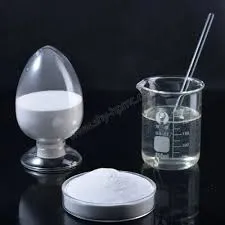
Th10 . 18, 2024 12:15 Back to list
Exploring the Applications and Benefits of Hydroxypropyl Methyl Cellulose HPMC in Various Industries
Hydroxypropyl Methylcellulose (HPMC) A Versatile Polymer in Pharmaceutical and Food Industries
Hydroxypropyl methylcellulose, often abbreviated as HPMC, is a modified cellulose polymer widely utilized in various sectors, with significant applications in the pharmaceutical and food industries
. This product has gained prominence due to its unique properties, including its ability to form gels, enhance viscosity, and serve as a stabilizing agent.Understanding HPMC
HPMC is derived from natural cellulose, which is a polysaccharide found in the cell walls of plants. Through a series of chemical processes, cellulose undergoes hydroxypropyl and methyl substitution, resulting in hydroxypropyl methylcellulose. The proportion of substitution influences the characteristics of HPMC, such as its solubility, viscosity, and gel-forming capabilities. These modifications allow HPMC to exhibit both hydrophilic and hydrophobic properties, making it a versatile agent in various applications.
Applications in Pharmaceuticals
In the pharmaceutical industry, HPMC is widely used as an excipient in tablet formulations. Its properties enable it to function effectively as a binder, disintegrant, and coating agent. When formulated into tablets, HPMC can significantly affect the release profile of active pharmaceutical ingredients (APIs). The viscosity of HPMC solutions aids in controlling the release of medications, thereby optimizing therapeutic effects.
Moreover, HPMC serves as a crucial ingredient in the development of sustained-release and controlled-release dosage forms. This characteristic is particularly beneficial for chronic health conditions that require consistent medication levels in the bloodstream. Additionally, HPMC is commonly used in ophthalmic preparations, such as eye drops and artificial tears, due to its ability to impart moisture and provide a sustained lubricating effect.
The safety profile of HPMC is another reason for its extensive use in the pharmaceutical field. It is generally recognized as safe (GRAS) by regulatory agencies such as the Food and Drug Administration (FDA) and is non-toxic, making it an ideal choice for formulations.
hydroxypropyl methyl cellulose hpmc

Role in Food Industry
Beyond pharmaceuticals, HPMC has gained traction in the food industry, where it serves multiple functions. It is frequently used as a thickening agent, emulsifier, and stabilizer, enhancing the texture and quality of various food products. HPMC is an effective fat replacer in low-fat and reduced-calorie formulations, providing a creamy mouthfeel without the additional calories of traditional fats.
Moreover, HPMC is utilized in gluten-free baking applications. The polymer helps mimic the structure and elasticity typically provided by gluten, allowing manufacturers to create products with improved texture and moisture retention. It also enhances the shelf life of baked goods by preventing staleness and maintaining freshness over time.
Benefits of Using HPMC
One of the significant advantages of HPMC is its capacity for water solubility, which can be tailored to meet specific application needs. The versatility of HPMC is evident in its range of viscosities and solubility profiles. This attribute is particularly beneficial for formulators, as it enables customization according to the desired product characteristics.
Additionally, HPMC is chemically stable and resistant to degradation, making it suitable for use in a variety of formulations without compromising efficacy. Its ability to form gels upon heating further expands its functionality across different applications, offering a wide range of possibilities in product design.
Conclusion
Hydroxypropyl methylcellulose (HPMC) is a remarkable polymer that continues to prove its worth across diverse industries. Its unique properties make it invaluable in the pharmaceutical sector for drug delivery systems and formulations, while its roles in the food industry—thickening, stabilizing, and enhancing product quality—demonstrate its versatility. As research in polymer science advances, the applications and benefits of HPMC are likely to expand further, cementing its status as a critical ingredient in various formulations. As industries continue to seek natural and effective alternatives, HPMC's derived characteristics ensure that it will remain a significant component in future innovations.
-
The Widespread Application of Redispersible Powder in Construction and Building Materials
NewsMay.16,2025
-
The Widespread Application of Hpmc in the Detergent Industry
NewsMay.16,2025
-
The Main Applications of Hydroxyethyl Cellulose in Paints and Coatings
NewsMay.16,2025
-
Mortar Bonding Agent: the Key to Enhancing the Adhesion Between New and Old Mortar Layers and Between Mortar and Different Substrates
NewsMay.16,2025
-
HPMC: Application as a thickener and excipient
NewsMay.16,2025
-
Hec Cellulose Cellulose: Multi functional dispersants and high-efficiency thickeners
NewsMay.16,2025







